2012 Jeep Wrangler: New Heart, And Capable as Ever.
- August 21, 2011
- Jeep, New Model Introductions, On The Road: Driving Impressions
- Posted by Ed Kim
- 1 Comment
The Jeep Wrangler is the spiritual heart and soul of the Jeep lineup. It is a true icon, recognized far beyond automotive circles. Its mere existence lends credibility to less off-road capable brandmates ilke Patriot and Compass. After all, it can be argued that Wrangler is THE original off-road SUV. With its heritage hearkening back to the Second World War, performing its duties heroically on battlefields in both the Pacific and European theaters, the Wrangler has off-road credibility arguably matched by no one.
In recent years, Wrangler has undergone some significant changes that have increased its appeal beyond hard core off-roaders, fortunately without selling its soul in the least. With its last major change for the 2007 model year, the four-door Unlimited model debuted, adding two rear doors and a huge extra helping of rear seat and rear cargo space. This additive model kept all of the Wrangler’s toughness and off-road cred, right down to its removable top and doors and folding windshield. Jeep thought the four-door would be a niche model, but they were dead wrong. The four-door accounts for 60% of all Wrangler sales.
At the same time, Wrangler also ditched its long-serving 4.0L inline-six for a rough and craggy 3.8L V6 with a mere 202HP. It was weak, got poor gas mileage, and sounded like a collection of loose nuts and bolts was in the crankcase. It, along with a cheap looking interior (even for a rough-and-tumble vehicle like Wrangler), was the only real weak spot in an otherwise very appealing package.
Jeep fixed the cheap interior for the 2011 model year, and now the 2012 model year has finally brought a heart transplant in the form of a new 285HP 3.6L DOHC 24v V6 as the standard (and only) engine.
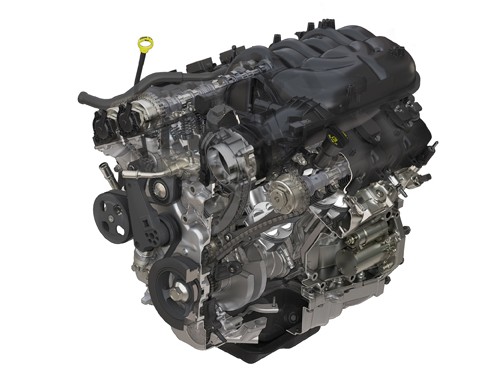
The new engine also sees the retirement of the four-speed automatic, which is replaced by a five-speed automatic. Last year’s six-speed manual remains the standard transmission.
Let’s get right to the point: the new powertrain absolutely transforms the Wrangler.
Jeep brought us to Oregon to test the revised Wrangler’s chops. Our drive started in Portland and snaked out west through farmland, forests, and Oregon’s wine country, eventually leading us to a very challenging off-road trail deep in the mountains of the Tillamook Forest.
On the road, the new engine’s transformative effect is immediately apparent. The engine has a nice growl that is refined and sporty, not uncouth and thrashy. It has plenty of low-end power – important in an off-road vehicle – but absolutely unlike any Wrangler before it, acceleration builds quickly the revs rise. Yes, this Wrangler has a lot of top end power in addition to bottom-end grunt, and it’s the first Wrangler that can be considered quick. Zero-to-sixty acceleration has improved a full three seconds, down to 8.4 seconds.
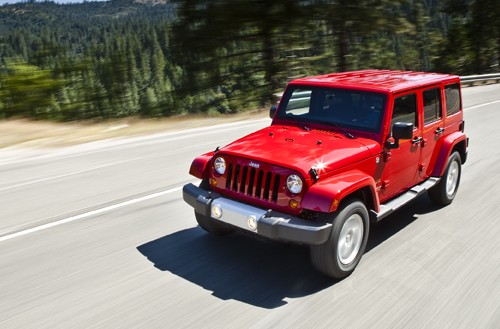
In addition, the Wrangler is now capable of getting up to 21 miles per gallon on the highway, as we were able to verify on our on-road portion of the drive route. Not bad at all for a vehicle with such stout off-road underpinnings and the aerodynamics of a brick.
We drove two different Wranglers on the road; the first was a four-door with the soft top deployed while the other was a two-door with the hard top in place. Both are relatively noisy on the road, though the hard top definitely shuts out more outside noise. But the on-road ride is surprisingly civilized for this type of vehicle; combined with the fairly spacious back seat and cargo area of the four-door, it’s actually perfectly usable as a daily driver.
But the real focus of the Wrangler is how it performs in the dirt. To that end, Jeep set us loose in Wrangler Rubicon models on a very challenging and technical 0.9-mile off-road trail amidst some spectacular surroundings. The Rubicon version of the Wrangler features some very serious off-road hardware including Dana 44 axles front and rear, front and rear locking diffs, disconnecting front sway bar, and 32-inch off-road tires.
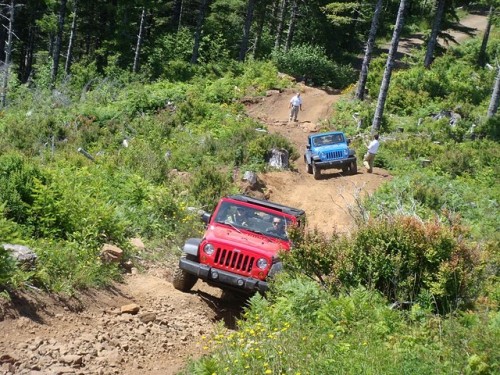
The course featured steep hills, ditches, logs, rocks, craters, and more. To my eyes, it simply looked impassable with anything on four wheels. But the Wrangler Rubicon, whether in two-door or longer four-door form, made short work of it. Under the tutelage of off-road spotters and following an instructor in a lead Jeep, we crawled over insane-looking obstacles at precarious angles. It was absolutely amazing to experience how much fun one could have at one mile per hour. Frankly, it was more of a test of the driver’s guts than the vehicle itself, which handled every obstacle with absolute confidence, completely free of any drama.
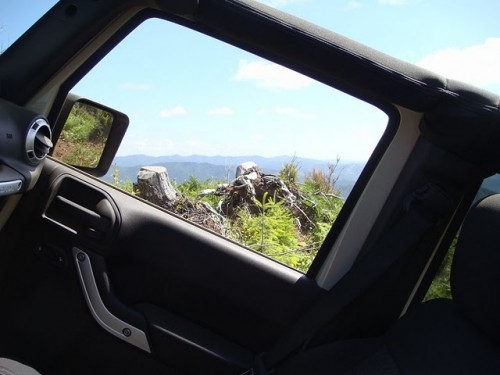
And despite the new engine’s newfound top-end horsepower, it still featured all of the low-end power one could ever need. The engine offered up plenty of torque just off idle, facilitating smooth progress in these severe off-road conditions.
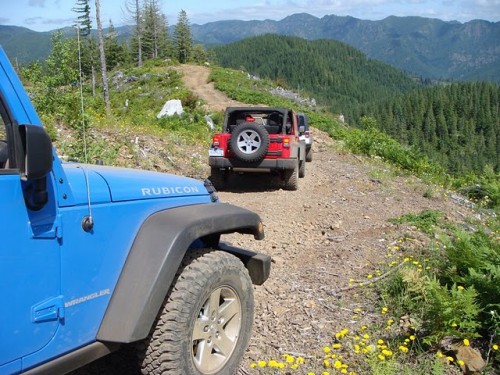
In the end, it’s great to see that despite the realities of high fuel prices and upcoming strict fuel economy standards, Wrangler has kept itself not only relevant in these times, but has actually become a far better vehicle. It’s far more powerful and fuel efficient. It is as off-road capable as ever. It’s a win-win for everyone. And that, friends, is progress.
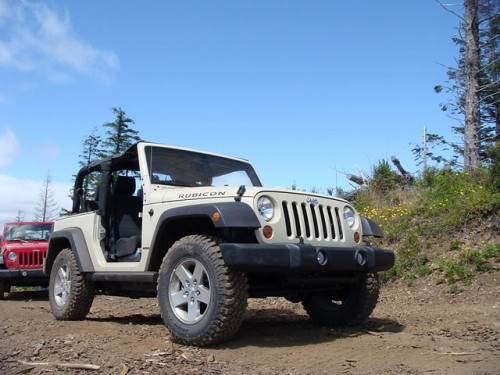
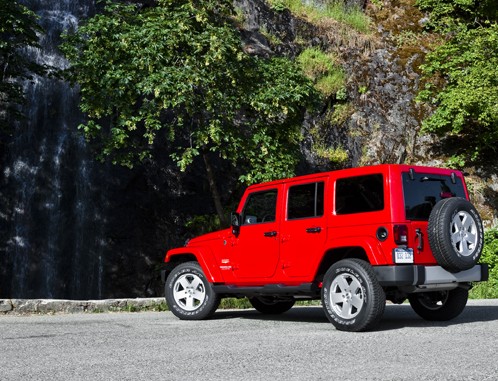
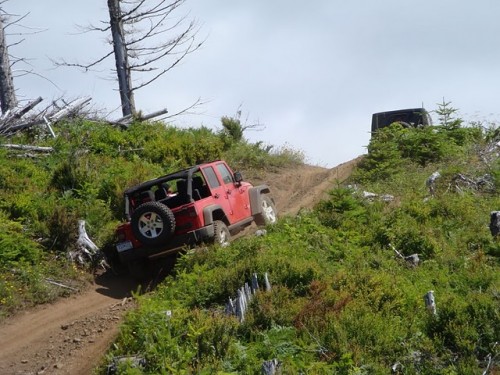
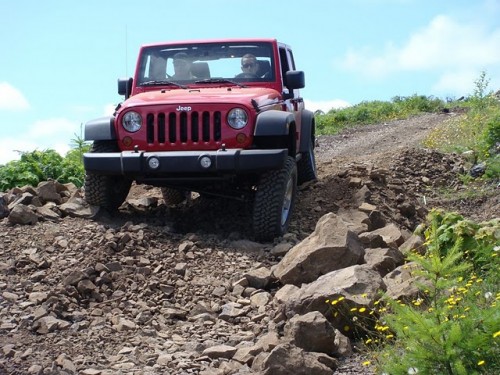
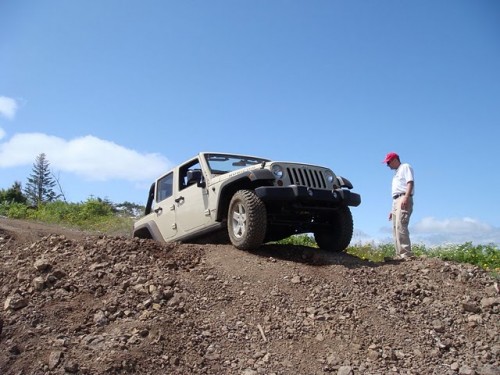


1 Comment
The Rubicon models continue to be the must have Wranglers! Thank you for replacing that aweful V6 with a real motor with performance and MPG. PS – the old 4.0L inline never produced those kind of numbers either!